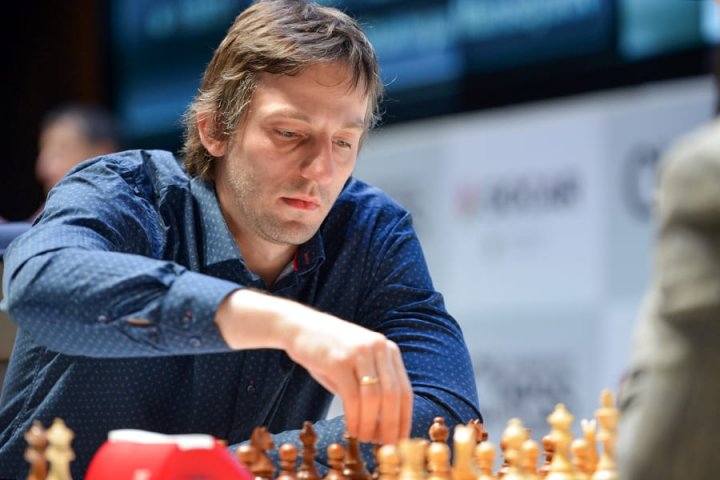Carlsen keeps half point edge
Perhaps the most notable feature of the day was the curious fact that the final position of the game Topalov vs Carlsen was almost identical to the final position of the game Karjakin vs Grischuk. With only five games in play, that's a pretty freak occurrence. Magnus himself mused that he would have been amused to see the exact same final position.
Alexander Grischuk no doubt chuckled as well | Photo: ShamkirChess.com
Results of Round 4
GM Daniel Fernandez takes you for a spin through all the day's play:
V. Topalov ½–½ M. Carlsen
The game between Veselin Topalov and Magnus Carlsen was unspectacular. Already after 20 moves a balanced rook ending was on the board, and another 16 moves later, the game was drawn by repetition.
This DVD offers a complete repertoire for handling this solid opening, often featuring a dynamic approach to pose the opponent more practical problems. Both of the main continuations 3...Nf6 and 3...Be7 are covered in two separate parts.
S. Karjakin ½–½ A. Grischuk
Karjakin and Grischuk got to their strikingly similar endgame despite some minor skirmishes in the middlegame — after 26 moves and a lot of exchanges the excitement dwindled.
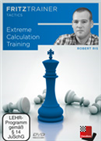 Special attention will be paid to Intermediate Moves, Quiet Moves, Sacrifices on Empty Squares, Mating Patterns, Ignoring Opponents Threat, Calculation in Defence and Method of Comparison. Plus 50 interactive examples to test your knowledge.
Special attention will be paid to Intermediate Moves, Quiet Moves, Sacrifices on Empty Squares, Mating Patterns, Ignoring Opponents Threat, Calculation in Defence and Method of Comparison. Plus 50 interactive examples to test your knowledge.
Sergey Karjakin | Photo: Shamkirchess.com
Ding Liren ½–½ V. Anand
Much more lively was the encounter between Ding Liren and Vishy Anand. Ding played aggressively and stormed out early with his g-pawn to attack the black king. But Anand parried the white threats on the kingside without much difficulty and generated counterplay on the queenside. After beating Mamedyarov in the third round, however, he did not seem to want to try his luck for the second time, so the game ended drawn in a double-edged position after 34 moves.
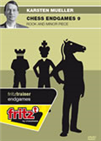 Endings with rook and minor piece against rook and minor piece occur very frequently, even more often than rook endings, yet there's not much literature on them. This endgame DVD fills this gap. The four different material constellations rook and knight vs rook and knight, rooks and opposite coloured (and same coloured ) bishops and rook and bishop vs rook and knight are dealt with. In view of the different material constellations Karsten Mueller explains many guidelines like e.g. "With knights even a small initiative weighs heavily".
Endings with rook and minor piece against rook and minor piece occur very frequently, even more often than rook endings, yet there's not much literature on them. This endgame DVD fills this gap. The four different material constellations rook and knight vs rook and knight, rooks and opposite coloured (and same coloured ) bishops and rook and bishop vs rook and knight are dealt with. In view of the different material constellations Karsten Mueller explains many guidelines like e.g. "With knights even a small initiative weighs heavily".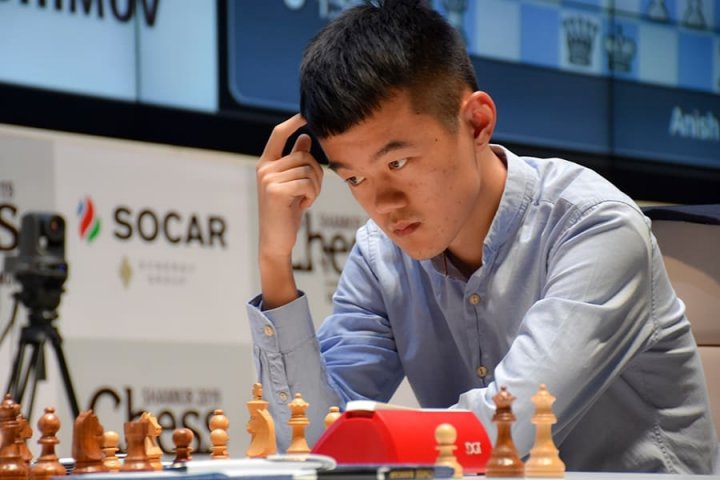
Ding Liren | Photo: Shamkirchess.com
A Giri ½–½ T. Radjabov
The fourth draw of the day was played by Anish Giri and Teimour Radjabov. In the Queen's Gambit with 5.♗f4 there arose a very closed position in which Black had no problems, but also little prospects. After 40 moves, the game ended in a draw by perpetual check.
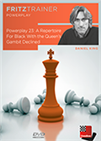 On this DVD Grandmaster Daniel King offers you a repertoire for Black with the QGD. The repertoire is demonstrated in 10 stem games, covering all White's major systems: 5 Bg5, 5 Bf4, and the Exchange Variation.
On this DVD Grandmaster Daniel King offers you a repertoire for Black with the QGD. The repertoire is demonstrated in 10 stem games, covering all White's major systems: 5 Bg5, 5 Bf4, and the Exchange Variation.
Anish Giri | Photo: ShamkirChess.com
S. Mamedyarov ½–½ D. Navara
In round three, Mamedyarov lost to Anand, and he again was on the defensive in round four against David Navara. The game initially followed Mamedyarov's loss to Vidit in Wijk aan Zee, but Navara deviated, and soon returned the gambited pawn. Mamedyarov sacrificed another pawn, aiming for a kingside attack, but when it fizzled he was left with a worse position. He finally succeeded in limiting the damage and held on for a draw in the rook ending.
 Rook endings are amongst the most frequently encountered endgames there are, and so your training effort will be quickly repaid in the form of half and full points. Knowing even a few rules of thumb and key methods makes life a great deal easier and provides a guiding light even in complex positions. This DVD focuses on the important themes which are to be found in common rook endings.
Rook endings are amongst the most frequently encountered endgames there are, and so your training effort will be quickly repaid in the form of half and full points. Knowing even a few rules of thumb and key methods makes life a great deal easier and provides a guiding light even in complex positions. This DVD focuses on the important themes which are to be found in common rook endings.
Shakhriyar Mamedyarov | Photo: ShamkirChess.com
Standings after Round 4
Round-up show with GM Daniel King
All games
Round 4 webcast
Commentary by GM Arkadij Naiditsch
Translation from German: Macauley Peterson
Links
.jpeg)

















